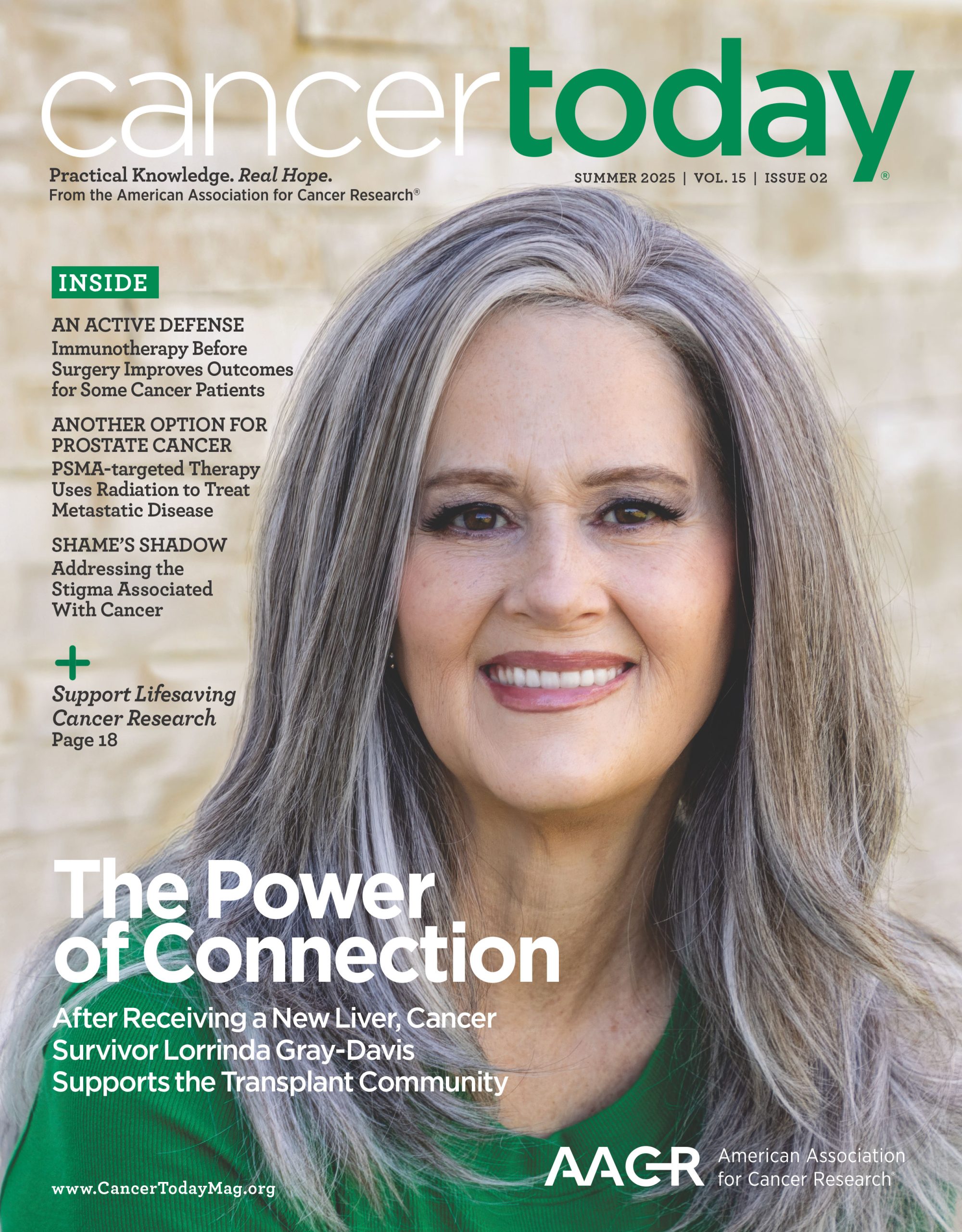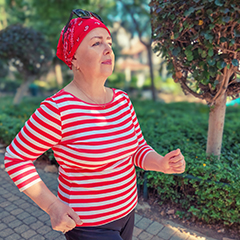PROGRESS IN EARLY DETECTION and treatment of cancer means more people are living longer after a diagnosis, leading some researchers to focus on measuring and improving quality of life (QOL) for patients and survivors. An April 7 session at the American Association for Cancer Research (AACR) Annual Meeting 2024 in San Diego examined “Approaches to Improve Quality of Life and Long-term Outcomes in Cancer Survivors Across the Lifespan.” (The AACR also publishes Cancer Today.)
Cancer survivorship is on the rise, with some 16.3 million people living five years or more beyond their diagnosis, said exercise physiologist and researcher Kerri M. Winters-Stone of the Oregon Health & Science University Knight Cancer Institute in Portland. Extended survival brings QOL issues to the fore.
“We want to be sure that all the extra birthdays that people get are spent with the highest quality of life possible,” said Winters-Stone. “But the truth is that cancer is really difficult and really debilitating.”
Health-related QOL issues change depending on the age of the cancer survivor. Epidemiologist Greg Armstrong of St. Jude Children’s Research Hospital in Memphis, Tennessee, spoke about survivors of childhood cancer who can live for decades after successful treatment. According to Armstrong, 85% of childhood cancer patients live for five years or more after diagnosis, and there are more than half a million of these survivors in the U.S. Some of them are now aging adults who are more likely to have chronic health conditions than people of comparable age who did not have cancer as a child.
Armstrong cited research showing a correlation between patient-reported symptoms and health-related QOL. One study published in 2013 in the Journal of Clinical Oncology showed that roughly half of adult survivors of childhood cancer had a moderate to high symptom burden, including pain, sensation abnormalities like neuropathy, and memory problems. Additionally, patients with the worst and most numerous symptoms reported the lowest QOL. Armstrong proposed using a symptom assessment tool as an early warning system for identifying QOL concerns in patients.
Researcher Laura B. Oswald of Moffitt Cancer Center in Tampa, Florida, looked at QOL in adolescents and young adults (AYAs), people diagnosed with cancer between ages 15 and 39. In 2023, an estimated 86,000 AYAs were diagnosed with cancer—primarily breast, thyroid and testicular cancers and melanoma. AYAs are a growing population of cancer survivors because more are being diagnosed with cancer but death rates have declined. AYA survivors report lower physical and mental QOL than the general population, and they are most concerned with QOL issues like fertility, sexual function, fatigue, symptom burden and body image.
Oswald described her research on behavioral and psychosocial interventions that could help improve QOL for AYA cancer survivors. After asking AYAs about the kinds of interventions they would prefer and topics they would like covered by an intervention, Oswald’s research group adapted elements of existing interventions to suit young adult cancer survivors. The resulting 10-week online intervention, called Together-YA, included elements of relaxation therapy, cognitive-behavioral therapy and health education. Early results from a small-scale study indicated that young adult participants were satisfied with the program and reported improvements in their overall QOL after participating in the intervention.
Oswald pointed out that there is a dearth of research and interventions for AYAs with advanced cancer. Among their specific concerns are significant symptom burden, the financial strain of ongoing treatment, and fears about mortality and anticipatory grief. “This is something we need to be giving way more attention to, something we need to be thinking more about, and absolutely an area for future research,” she said.
Winters-Stone moved up the age continuum to examine QOL issues among older cancer survivors. Three-quarters of cancer survivors in the U.S. are over age 60, and half are over 70, she said. Despite advanced age, many of them will live years after diagnosis. Among these older adults, 74% with a terminal illness would not choose treatment if it caused severe functional impairment, and 89% would not choose treatment if it caused cognitive impairment, according to a 2002 study in the New England Journal of Medicine.
“We don’t want our older patients to have to make these decisions; we want them to be able to choose the treatments that are going to give them more years but also ensure that those years are as high quality as possible,” she said.
According to Winters-Stone, cancer treatments can accelerate aging in older cancer patients, and the aftermath can include bone and muscle loss, weakness, poor mobility, sensory loss, cognitive decline, depression and feelings of isolation and loneliness. “We want to intercept this trajectory,” she said. “We want people, even if they have a chronic illness like cancer, to live as high a quality of life even in the face of that illness and for as long as they can,” she said.
Physical activity is potentially a way to mitigate some of these outcomes, she said. A review of studies examining the relationship between exercise and cancer-related outcomes led to guidelines published in 2019 in Medicine & Science in Sports & Exercise stating that 30 minutes of moderate-intensity aerobic and/or resistance exercise three times a week improved some of the outcomes, although Winters-Stone said there was virtually no evidence derived from studies of older cancer survivors.
Winters-Stone concluded with a discussion of loneliness and isolation among older cancer survivors. “Cancer is isolating,” she said. “If you’re managing cancer alone, it’s not being managed well.” Winters-Stone called for more research into QOL among older cancer survivors. “We really do need to urgently shift our focus to the needs and concerns of older adults,” she said. “We need to understand what their preferences are.”
Cancer Today magazine is free to cancer patients, survivors and caregivers who live in the U.S. Subscribe here to receive four issues per year.





